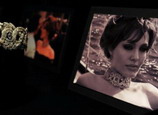
Now let's come back to Chan's donation.
Chan was criticized by a lot of people on Weibo, some of them cursing him as a "race traitor." But more facts were revealed in the interview. Chan's original plan was to donate these historic houses to some local governments. However, his enthusiasm was only met by refusal or attempts to profit from his name.
His frustration and helplessness lasted for years until Singapore offered a sincere attempt to preserve and display the artifacts.
This is a normal state when it comes to relics preservation in China. People's attention has rarely been focused on how to preserve and develop the historic and artistic value of these relics to the utmost, but on the profit they can produce.
Chan's donation was just another sign of the Chinese better-death-than-dishonor philosophy. It unfortunately touched a raw nerve for many Chinese who would rather let these ancient sandalwood houses rot in a warehouse than allow so-called outside forces to look after them.
Compared with the well-preserved Chinese relics in foreign museums, many historical relics end up in poor conditions at home, including improper temperatures, damage by insects and inadequate expertise of some local museum staff. This partly explains why relics preservation is quite a controversial topic among Chinese historians.
Some argue that it would be much better if the Chinese could have a more international vision about the preservation of relics. Actually, such relics could be a perfect embodiment of Chinese culture and history, even when their beauty is showcased in a foreign museum or university campus.
Preserving relics is a serious undertaking which requires commitment and professionalism. The priority should never be how much money we can make by making use of them, but on how much value we can derive from their historic and artistic heritage. What really matters is appreciation, not appropriation.

















 White angels in Chongqing South West Hospital
White angels in Chongqing South West Hospital


![]()
